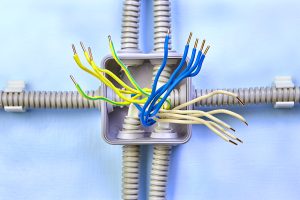How to Calculate Junction Box Size with Terminal Blocks (NEC 2023)?
Overview
Power is typically provided to buildings through junction and outlet boxes. These boxes can vary in size based on the power requirements of the equipment installed within the building and their consumption patterns. More consumption means more / larger conductors, requiring larger boxes to be installed on site to fit them all. But how much should the size actually vary with the required number of conductors? Section 314.16 addresses this question by highlighting the different conductors that can be accommodated in a junction / outlet box and provides corresponding sizing criteria to meet their heating and electrical isolation requirements. Terminal blocks are now recognized as a significant component of junction/outlet boxes, playing a crucial role in determining the box size.
Applying the 2023 Code
The sizing of junction and outlet boxes is determined by the number of conductors and other equipment they need to accommodate. While larger boxes offer more space for equipment, determining the minimum size or volume can be challenging as the box must provide ample space for electrical isolation and heat dissipation for the conductors
and conduits. Various components such as spliced conductors, grounding conductors, internal cable clamps, outlets, switches, luminaire studs, and hickeys each have specific allowable volumes already factored into box fill calculations.
However, the inclusion of terminal blocks further refines the sizing requirements for outlet and junction boxes in the industry. An additional volume allowance of one must be made for each terminal block assembly within the box. By calculating the required spacing for the terminal blocks, electrical professionals can select the appropriate size for the outlet/junction box, preventing overcrowding by different equipment.
What’s New for the 2023 NEC?
2020 NEC
In the 2020 NEC Section 314.16(B) had five subsections.
2023 NEC
In the 2023 NEC Section 314.16(B), the sixth subsection was added to highlight importance of terminal blocks in box fill calculations. This additional subsection reads as follows (without exceptions and informational notes):
(6) Terminal Block Fill
Where a terminal block is present in a box, a single volume allowance in accordance with Table 314.16(B)(1) shall be made for each terminal block assembly based on the largest conductor(s) terminated to the assembly.

